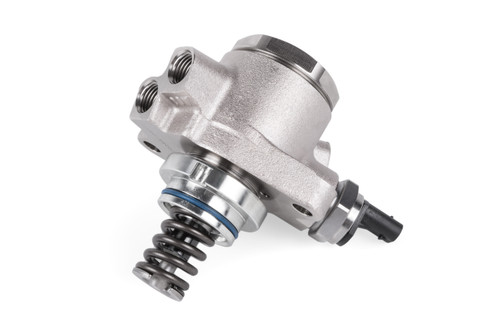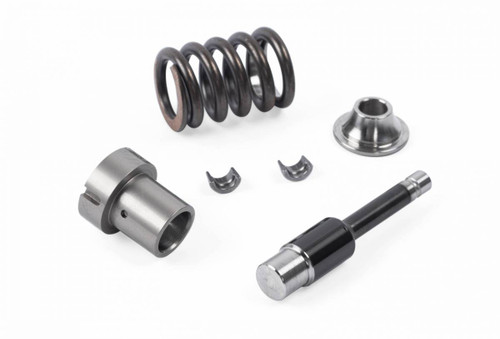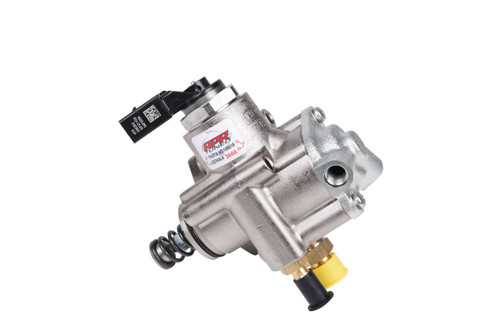 WARNING: This product can expose you to chemicals that are known to the State of California to cause cancer, birth defects or other reproductive harm. For more information, visit www.P65warnings.ca.gov.
WARNING: This product can expose you to chemicals that are known to the State of California to cause cancer, birth defects or other reproductive harm. For more information, visit www.P65warnings.ca.gov.The APR High Pressure Fuel Pumps (HPFP) (MS100072) are the ultimate fueling solution for the Audi B7 RS4 4.2FSI engine. This critical upgrade addresses fueling limitations imposed by high-horsepower applications, such as supercharged or turbocharged systems, by dramatically increasing the maximum volume of fuel the HPFP can deliver by an impressive 41% over stock.
The APR solution focuses on increasing the pump's displacement by enlarging the bore diameter of the internal pressurizing cylinder, ensuring a high volume of fuel is available at every RPM to keep fuel pressure steady. Featuring extreme tolerances (as tight as 0.00004" dimensional and 0.00005" geometrical), a DLC coated piston, and a heat-treated bearing-grade stainless steel construction, these pumps are built in-house using genuine Hitachi components for OEM reliability. The design retains the factory pivoting head to minimize cam follower wear, making it reliable for the most demanding driving situations.
Features:
-
Increased Fuel Volume: Dramatically increases the volume of fuel displaced by the HPFP by 41% over stock.
-
Supports Big Power: Maintains higher fuel pressures under demanding situations, ideal for supercharger and turbocharger upgrades.
-
Extreme Tolerances: Manufactured with ultra-high precision, featuring dimensional tolerances as tight as 0.00004" and geometrical tolerances as tight as 0.00005".
-
Superior Construction: Features a DLC (Diamond-Like Carbon) coated piston and plunger/barrel created from heat-treated bearing-grade stainless steel.
-
Optimized Internals: Includes an upgraded and weight-matched spring and retains the factory pivoting head to reduce cam follower wear and piston side loading.
-
Quality Assurance: Fully rebuilt in-house, includes new OEM Hitachi factory pumps (housings/sensors), and is fully machine tested and broken in before shipping.
Product Contains:
-
(2) APR High Pressure Fuel Pump Assemblies (For V8 Engine)
-
(2) New OEM Hitachi Pumps (Housing/Sensors)
-
(2) Upgraded and Weight Matched Springs
-
(2) DLC Coated Piston and Barrel Assemblies
-
(1) Set of All Internal Seals (including spring seals)
Important Note: The HPFP internals must be installed in a clean environment to prevent pump failure. This upgrade is typically paired with APR ECU software (sold separately) to maximize performance.
Warranty This product is supported by a Manufacturer's Warranty. Note: Manufacturer warranty terms are subject to change.
- PDP tag:
- Free Shipping*
- Sale:
- On Sale
- pdp tag:
- On Sale










